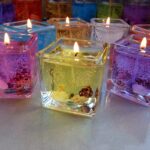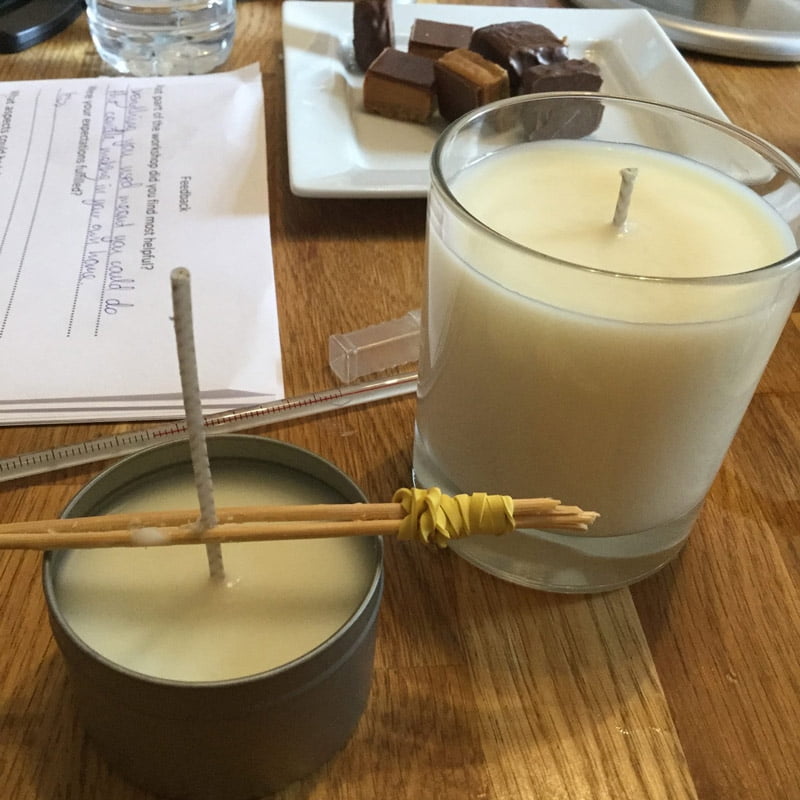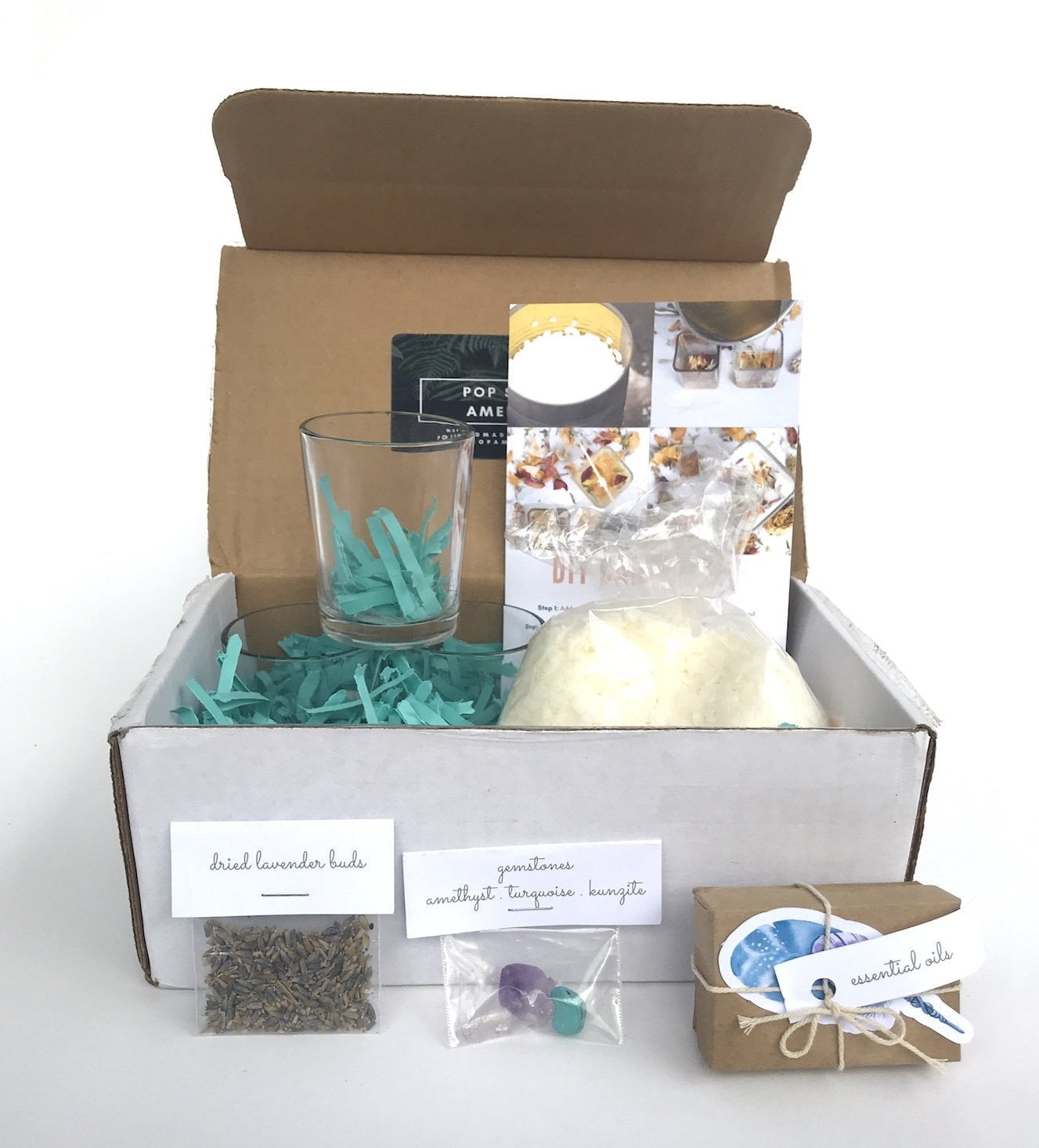What kind of thermometer do you use for candle making? Using the right thermometer is crucial in the candle making process as it ensures the quality and consistency of the finished product.
Temperature control is essential in each stage of candle making, from melting wax to adding fragrance oils, and finally, pouring the wax into containers. In this article, we will explore the significance of using a thermometer in candle making, the different types available, and recommended thermometers specifically designed for this craft.
Temperature plays a vital role in creating high-quality candles. Whether you are a beginner or an experienced chandler, using a thermometer can make a significant difference in your candle-making process. It helps in maintaining accuracy and precision in temperature regulation throughout all stages of production. This ultimately leads to consistent results and ensures that your candles burn evenly and produce their intended scent.
In this article, we will delve into the various types of thermometers suitable for candle making, including digital, infrared, and candy thermometers. We will also recommend specific thermometers designed for this craft and highlight their features and benefits.
Additionally, we will cover the ideal temperature range for different stages of candle making and provide helpful tips for using a thermometer effectively. Let’s explore how choosing the right thermometer can elevate your candle-making experience and improve the overall quality of your products.
Types of Thermometers
When it comes to candle making, using the right thermometer is crucial for achieving the desired results. There are several types of thermometers available that can be used for this purpose, each with its own set of features and benefits. Understanding the differences between these thermometers is essential for choosing the best one for your candle making endeavors.
Digital Thermometers
Digital thermometers are a popular choice among candle makers due to their ease of use and accuracy. These thermometers typically have a digital display that shows the temperature readings, making it easier to monitor the wax melting process. Some digital thermometers also come with additional features such as programmable temperature alarms, which can be helpful for maintaining precise temperatures during the candle making process.
Infrared Thermometers
Infrared thermometers are another option for monitoring temperatures in candle making. These thermometers work by measuring the surface temperature of the wax or container without direct contact, making them ideal for situations where traditional probes may not be suitable. However, it is important to note that infrared thermometers may not provide as accurate readings as other types of thermometers, so they should be used with caution.
Candy Thermometers
Candy thermometers are traditionally used for making sweets and confections but can also be used for candle making. These thermometers feature a clip that allows them to be attached to the side of a pot or container, providing a hands-free solution for monitoring temperatures. However, candy thermometers may not always be as precise as digital or infrared models and may require calibration before each use.
Knowing what kind of thermometer do you use for candle making will ultimately depend on your specific needs and preferences. Whether you prefer a digital thermometer for its accuracy and convenience, an infrared thermometer for its non-contact temperature measurements, or a candy thermometer for its versatile application, each type has its own advantages when it comes to monitoring temperatures in candle making.
Recommended Thermometers
When it comes to making candles, using the right thermometer can make a significant difference in the quality and success of your final product. There are various types of thermometers available on the market, and choosing one specifically designed for candle making can help streamline the process and ensure accurate temperature readings. Below are some recommended thermometers that are popular among candle makers, along with their features and benefits:
- Digital Thermometers: Digital thermometers are a popular choice for candle making due to their accuracy and ease of use. They often come with a probe that can be immersed into the wax, providing real-time temperature readings. Some digital thermometers also have programmable features and alarms to notify you when the desired temperature is reached.
- Infrared Thermometers: Infrared thermometers are non-contact devices that measure surface temperatures without touching the material. They are convenient for quickly checking the temperature of melted wax or cooling candles without having to insert a probe directly into the wax.
- Candy Thermometers: While not specifically designed for candle making, candy thermometers can also be used effectively in this craft. They typically have a clip to attach to the side of a pot or container, allowing you to monitor temperatures as you melt the wax and add fragrance oils.
Each type of thermometer has its own unique features and benefits, so it’s important to consider your specific needs as a candle maker before deciding which one to invest in. Regardless of which thermometer you choose, it’s crucial to prioritize accuracy and precision in temperature measurements to ensure consistent results in your candle making process.
In addition to selecting the right thermometer for your candle making needs, it’s essential to understand the ideal temperature range for each stage of the process. Whether it’s melting wax, adding fragrance oils, or pouring the wax into containers, maintaining precise temperatures is critical for achieving high-quality candles. By investing in a reliable thermometer designed for candle making and familiarizing yourself with its features, you can achieve greater precision and efficiency in your craft.
Temperature Range
When it comes to candle making, maintaining the proper temperature throughout the process is vital to create high-quality candles. Whether you are melting wax, adding fragrance oils, or pouring the wax into containers, having the right temperature range is crucial for achieving the desired results.
Melting Wax
The ideal temperature range for melting wax depends on the type of wax being used. For example, soy wax typically melts between 110°F and 180°F, while paraffin wax melts at a higher temperature range of 130°F to 150°F. It’s essential to use a thermometer that accurately measures these temperatures to prevent overheating or underheating the wax, which can affect its quality and performance.
Adding Fragrance Oils
When incorporating fragrance oils into the melted wax, it’s important to do so at the recommended pouring temperature provided by the fragrance oil manufacturer. Typically, this falls within the range of 120°F to 180°F. Using a thermometer ensures that the wax is at the correct temperature before adding fragrance oils, which helps in achieving a consistent and well-scented candle.
Pouring Into Containers
The temperature at which you pour the melted wax into containers also plays a significant role in candle making. Each type of wax has its specific pouring temperature range, and using a thermometer will help ensure that you are pouring the wax at the right temperature. This typically ranges from 125°F to 175°F depending on the type of wax being used.
Accuracy and Precision
When it comes to candle making, accuracy and precision are crucial factors that can significantly impact the quality of the finished product. One of the key tools for achieving this level of accuracy is a reliable thermometer. The right thermometer will ensure that you are working within the ideal temperature range for melting wax, adding fragrance oils, and pouring the wax into containers.
There are several types of thermometers available for candle making, each with its own level of accuracy and precision. When choosing a thermometer for candle making, it’s important to consider factors such as ease of use, durability, and most importantly, accurate temperature readings. Here are some recommended thermometers specifically designed for candle making:
- Digital Thermometers: These thermometers provide quick and accurate temperature readings, making them ideal for monitoring the temperature of melted wax and fragrance oils.
- Infrared Thermometers: This type of thermometer measures surface temperatures without direct contact, which can be useful for checking the temperature of wax without having to insert a probe.
- Candy Thermometers: While not specifically designed for candle making, candy thermometers can still be used effectively to monitor the temperature of wax as they are designed to withstand high heat levels.
Using a thermometer with accurate temperature readings is essential for ensuring the success of the candle making process. From melting wax at the correct temperature to adding fragrance oils and pouring the wax into containers, precise temperature control is key to producing high-quality candles.
Without a reliable thermometer, there is a risk of overheating or underheating the wax, which can result in poor consistency or scent throw in the finished candles. By investing in a quality thermometer specifically designed for candle making, you can ensure that your candles turn out exactly as intended every time.
Tips for Using a Thermometer
When it comes to candle making, using a thermometer is essential for achieving the desired results. To ensure that your candles have the perfect texture, consistency, and fragrance throw, it’s important to use a reliable thermometer throughout the entire process. But what kind of thermometer do you use for candle making? There are several options available, each with its own set of features and benefits.
One of the most popular types of thermometers for candle making is a digital thermometer. This type of thermometer provides quick and accurate temperature readings, allowing you to monitor the wax temperature with precision. Another option is an infrared thermometer, which can measure the surface temperature of the wax without direct contact. Additionally, candy thermometers are often used by candle makers due to their wide temperature range and durability.
When choosing a thermometer for candle making, look for one that is specifically designed for this purpose. These thermometers are often equipped with features such as long probes for reaching deep into the wax and easy-to-read digital displays. Some are even equipped with alarms to alert you when your wax reaches the desired temperature.
In addition to choosing the right type of thermometer, proper cleaning and maintenance are essential to ensure accurate readings and prolong the lifespan of your thermometer. Be sure to clean your thermometer thoroughly after each use and store it in a safe place away from extreme temperatures or moisture. Regular calibration may also be necessary to maintain accuracy over time. By taking these steps, you can ensure that your thermometer remains a reliable tool for successful candle making.
| Type of Thermometer | Features |
|---|---|
| Digital Thermometer | Quick and accurate temperature readings; easy-to-read digital display |
| Infrared Thermometer | Measures surface temperature without direct contact; convenient for large batches |
| Candy Thermometer | Wide temperature range; durable; ideal for beginners |
Common Mistakes to Avoid
When it comes to using a thermometer for candle making, there are some common mistakes that beginners often make. Understanding these mistakes and knowing how to prevent them is crucial for ensuring the success of your candle making process. One common mistake is not using the right type of thermometer for candle making. It’s important to use a thermometer that is specifically designed for measuring the temperature of melted wax and fragrance oils.
Another mistake to avoid is not properly calibrating your thermometer before each use. This can lead to inaccurate temperature readings, which can in turn affect the quality of your candles. Additionally, beginners often overlook the importance of cleaning and maintaining their thermometers. Failure to clean and maintain your thermometer can result in residue buildup that affects its accuracy.
To prevent these common mistakes, it’s essential to choose a thermometer that is suitable for candle making, such as a digital candy thermometer or an infrared thermometer with a wide temperature range. It’s also important to calibrate your thermometer regularly and ensure that it is clean and well-maintained before each use.
By being mindful of these common mistakes and taking proactive steps to prevent them, you can ensure that your candles are made at the correct temperatures, resulting in high-quality finished products that burn evenly and release fragrance effectively.
| Common Mistakes | How to Prevent Them |
|---|---|
| Using the wrong type of thermometer | Choose a thermometer specifically designed for measuring wax and fragrance oil temperatures |
| Not calibrating the thermometer | Regularly calibrate the thermometer before each use |
| Neglecting cleaning and maintenance | Ensure proper cleaning and maintenance of the thermometer before each use |
Conclusion
In conclusion, choosing the right thermometer is crucial for successful candle making. The use of a thermometer ensures that the wax is melted at the correct temperature, fragrance oils are added at the optimal point, and the wax is poured into containers at the right time.
The accuracy and precision of the thermometer play a significant role in determining the quality and consistency of the finished candles. It is essential to select a thermometer specifically designed for candle making to achieve the best results.
When considering what kind of thermometer to use for candle making, it is important to explore the various options available, such as digital, infrared, and candy thermometers. Each type has its own features and benefits, so it’s crucial to choose one that meets your specific needs and preferences. Additionally, paying attention to temperature range and ensuring accurate readings are vital factors in selecting a thermometer for candle making.
In summary, investing in a high-quality thermometer designed for candle making can greatly contribute to the success of this craft. By understanding the different types of thermometers available, maintaining precision and accuracy during temperature readings, and avoiding common mistakes in their use, you can improve your candle making process significantly. Ultimately, choosing the right thermometer will help ensure that your candles are consistently of high quality and meet your creative vision.
Frequently Asked Questions
How Do You Check the Temperature of Candle Wax?
The temperature of candle wax can be checked using a simple candy thermometer. This type of thermometer is designed to withstand the high temperatures required for melting and pouring candle wax. By simply dipping the thermometer into the liquid wax, you can accurately gauge its temperature.
Is Infrared Thermometer Accurate for Candle Making?
Yes, an infrared thermometer can be accurate for candle making. Infrared thermometers are non-contact, meaning they can measure the temperature from a distance without actually touching the wax. They are convenient for checking the surface temperature of the wax and are generally accurate for this purpose, as long as they are used correctly.
What Thermometer Measures Wax Temperature?
A specifically designed candle-making thermometer, also known as a pouring pitcher thermometer, is ideal for measuring wax temperature. These thermometers usually have a clip to attach to the side of the melting or pouring container, allowing you to monitor the temperature throughout the process. They are easy to read and provide precise measurements for successful candle making.

Welcome to my candle making blog! In this blog, I will be sharing my tips and tricks for making candles. I will also be sharing some of my favorite recipes.





